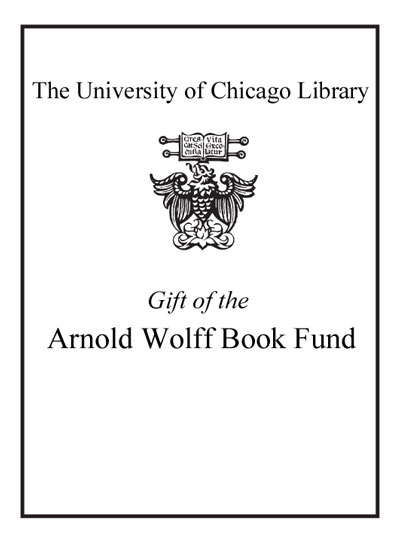The future of capitalism and democracy /
Saved in:
| Author / Creator: | Baofu, Peter. |
|---|---|
| Imprint: | Lanham, MD : University Press of America, c2002. |
| Description: | xiii, 673 p. ; 22 cm. |
| Language: | English |
| Subject: | |
| Format: | Print Book |
| URL for this record: | http://pi.lib.uchicago.edu/1001/cat/bib/4864993 |
Table of Contents:
- List of Tables
- Foreword
- Acknowledgements
- Introduction
- Chapter 1. Globality, and the Old Hegemony of Capitalism and Democracy
- 1.1.. Globality by Other Names
- 1.2.. Globality as the Latest Phase of Postmodernity
- 1.3.. The Metamorphosis of Violence in History
- 1.4.. The Need of Theoretical Holism
- 1.5.. The Structure of the Project
- Part I. Cognition, Emotions, and Behavior
- Chapter 2. Global Rationality and Its Dogmatic Assumptions
- 2.1.. The Dogmas of Global Rationality
- 2.2.. The Obsolescence of Homo Economicus
- 2.3.. The Bias of Non-Violent Conflict Management Psychology
- 2.4.. The Limits of Cognitive Impartiality
- 2.5.. The Illusion of Emotional Neutrality
- 2.6.. The Myth of Human Biological Equality
- Part II. Culture
- Chapter 3. Global Culture and Its Essential Dilemmas
- 3.1.. Culture and Anti-Culture
- 3.2.. Liberating Yet Deconstructive
- 3.3.. Diffusive Yet Hegemonic
- 3.4.. Unto Human Extinction and Post-Humanity
- Chapter 4. Global Morality and Its Immoral Face
- 4.1.. Immorality within Morality
- 4.2.. Christian Morality
- 4.3.. The Morality of American Exceptionalism
- 4.4.. Liberal Morality
- 4.5.. The Morality of Human Nature
- 4.6.. Immorality in the Name of Morality
- Part III. Institutions
- Chapter 5. Global Wealth and Its Competing Voices
- 5.1.. The Joy of Wealth, and the Sorrow of Distribution
- 5.2.. The Voice of the Upper
- 5.3.. The Voice of the Middle
- 5.4.. The Voice of the Lower
- 5.5.. Wealth for Whom? And Progress for What?
- Chapter 6. Global Governance and Its Conflicting Nature
- 6.1.. The Authority of Governance, and the Agony of Justice
- 6.2.. The Varieties of Meta-Institutional Grounding
- 6.3.. The Diversity of Institutional Frameworks
- 6.4.. Governance for Whom? And Justice for What?
- Part IV. Organizations
- Chapter 7. Global Civil Society and Its Ambivalent Future
- 7.1.. The Promise of Civil Society, and the Politics of NGO's
- 7.2.. The Coming E-Topia
- 7.3.. E-Lifeform and E-Civic Virtues
- 7.4.. Quaternary Social Relations and E-Civic Virtues
- 7.5.. E-Civic Virtues and International Organizations
- 7.6.. NGO's for Whom? And Civic Society for What?
- Part V. Structure
- Chapter 8. Global Stratification and Its New Sameness
- 8.1.. The Longevity of Stratification
- 8.2.. New Players with Old Dreams
- 8.3.. New Forms with Old Shadows
- 8.4.. New Causes with Old Effects
- 8.5.. All the World as a Stage for Stratification
- Part VI. Systems
- Chapter 9. Global Trends and Their Double Games
- 9.1.. The Multiple Forms of Violence
- 9.2.. Soft Rationality and the Causes of War and Peace
- 9.2.1.. An Enduring Battle Between Two Military Doctrines
- 9.2.2.. The Fad of Soft Rationality
- 9.2.3.. The Contingent Fall of Total Warfare
- 9.2.4.. The Contingent Rise of Non-Total Warfare
- 9.2.5.. The Hi-Tech Forms of Warfare and Violence
- 9.3.. Aesthetic Sublimity and Virtual Psychosis
- 9.3.1.. Three Moments of the Sublime
- 9.3.2.. The Historically Contingent Expressions of the Sublime
- 9.3.3.. The Pathological Sides of the Sublime
- 9.4.. Climatology, Religion, and the Politics of the Environment
- 9.4.1.. The Environmental Divide
- 9.4.2.. Doctor Spin of Climatology
- 9.4.3.. The Quarrelsome Marriage between Faith and the Environment
- 9.5.. Global Societal Forms and Historic Hegemony
- 9.5.1.. In the Short Run: Three Views of the Post-Cold War World
- 9.5.2.. In the Medium-Run: Four Images of the Future Global Order in the Post-Post-Cold War Era and Beyond
- 9.5.3.. In the Long Run: An Epic of the Cyclical Progression of Hegemony for Post-Humans in Multiverses
- 9.6.. Human Solace and the Myth of Violence
- Part VII. Cosmos
- Chapter 10. Post-Global Trends and The Cyclical Progression of Hegemony in Multiverses
- 10.1.. From Global to Post-Global Trends
- 10.2.. The Driving Technologies and Economic Processes in Future Change
- 10.2.1.. The Driving Technologies in the Medium Future
- 10.2.2.. The Driving Economies in the More Distant Future
- 10.3.. The New Players and Values in Post-Capitalism
- 10.3.1.. The Need of a Post-Autistic Economics
- 10.3.2.. The Faulted Logic of Free Market
- 10.3.3.. The Role of New Players and Their Transvaluations
- 10.3.4.. The Role of IT
- 10.4.. The New Players and Values in Post-Democracy
- 10.4.1.. The Dogmatic Origins of a Self-Evident Truth
- 10.4.2.. The Faulted Logic of Equality
- 10.4.3.. The Role of Post-Humans and Their Transvaluations
- 10.4.4.. The Next Frontier: Deep Space in Multiverses
- 10.5.. The Trinity of After-Postmodernity, and the Future of Post-Human Civilization
- 10.5.1.. Free-Spirited After-Postmodernity
- 10.5.2.. Post-Capitalist After-Postmodernity
- 10.5.3.. Hegemonic After-Postmodernity
- Conclusion
- Chapter 11. Post-Globality, and the New Hegemony of Post-Capitalism and Post-Democracy
- 11.1.. Prophesy of Post-Humanity as Farewell to Humanity
- 11.2.. Ontological Constructs, and the Limits of Knowledge
- 11.3.. Everyday Prejudices, and the Poverty of Understanding
- Bibliography
- Index

